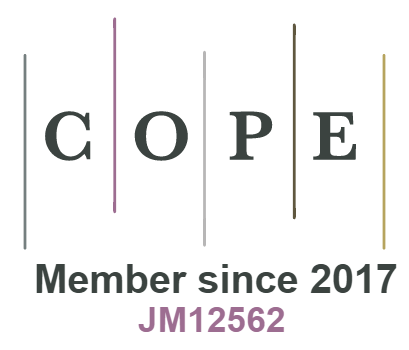Digitization in Production: A Timely Opportunity
DOI:
https://doi.org/10.18034/ei.v4i2.595Keywords:
Digitization, Innovation, Process Innovation, Industry RevolutionAbstract
Using modern digital technology, the production team aspires to innovate and enhance existing procedures. However, the majority of the time, information about these new technology exists outside of a company's walls. The idea of absorptive capacity, as well as literature on open innovation, are used by the authors to investigate the function of external search in the digitalization of the manufacturing industry. Companies in the manufacturing industry who want to digitize their processes can profit from inbound open process innovation, but the effectiveness of this approach differs depending on which cluster of digital technologies is being used. In general, the findings imply that enterprises should focus on developing strong links with a small number of external knowledge partners rather than maintaining superficial relationships with a large number. An investigation of the relationship between enterprises' external search and their use of digital technology is presented in this paper, which contributes to the expanding body of literature on the digitalization of manufacturing. It contributes to the literature on open process innovation by providing early empirical insights.
Downloads
References
Adner, R. and Levinthal, D. (2001). Demand heterogeneity and technology evolution: implications for product and process innovation. Journal of Manufacturing Science and Engineering, 47(5), 611-628.
Bauernhansl, T. (Ed.) (2014). Industrie 4.0 in Produktion, Automatisierung und Logistik, Springer, Wiesbaden.
Boyer, K.K. and Lewis, M.W. (2002). Competitive priorities: investigating the need for trade-offs in operations strategy. Production and Operations Management, 11(1), 9-20.
Chesbrough, H. and Bogers, M. (2014). Explicating open innovation: clarifying an emerging paradigm for understanding innovation. New Frontiers in Open Innovation, Oxford University Press, Oxford, 3-28.
Chesbrough, H. W. (2003). Open Innovation: The New Imperative for Creating and Profiting from Technology. Harvard Business School, McGraw-Hill, Maidenhead, Boston, Mass.
Cohen, W. M. and Levinthal, D. A. (1990). Absorptive capacity: a new perspective on learning and innovation. Administrative Science Quarterly, 35(1), 128-152.
Crossan, M.M. and Apaydin, M. (2010). A multi-dimensional framework of organizational innovation: a systematic review of the literature. Journal of Management Studies, 47(6), 1154-1191.
Deuse, J., Weisner, K., Hengstebeck, A. and Busch, F. (2015). Gestaltung von Produktionssystemen im Kontext von Industrie 4.0”, in Botthof, A. and Hartmann, E.A. (Eds), Zukunft der Arbeit in Industrie 4.0, Springer Berlin Heidelberg, Berlin, Heidelberg, 99-109.
Frishammar, J., Kurkkio, M., Abrahamsson, L. and Lichtenthaler, U. (2012). Antecedents and consequences of firms’ process innovation capability. A literature review and a conceptual framework. IEEE Transactions on Engineering Management, 59(4), 519-529
Kagermann, H. (2015). Change through digitization – value creation in the age of Industry 4.0. In Albach, H. and Meffert, H. (Eds), Management of Permanent Change, Springer Gabler, Wiesbaden, 23-45.
Laursen, K. and Salter, A. (2006). Open for innovation. The role of openness in explaining innovation performance among U.K. manufacturing firms. Strategic Management Journal, 27(2), 131-150.
Laursen, K. and Salter, A. J. (2014). The paradox of openness: appropriability, external search and collaboration. Research Policy, 43(4), 867-878.
Lichtenthaler, U. and Lichtenthaler, E. (2009). A capability-based framework for open innovation: complementing absorptive capacity. Journal of Management Studies, 46(8), 1315-1338
Organisation for Economic Co-operation and Development (2005). Oslo Manual: Guidelines for Collecting and Interpreting Innovation Data, 3rd ed., OECD Publishing, Paris.
Pasupuleti, M. B. (2015a). Data Science: The Sexiest Job in this Century. International Journal of Reciprocal Symmetry and Physical Sciences, 2, 8–11. Retrieved from https://upright.pub/index.php/ijrsps/article/view/56
Pasupuleti, M. B. (2015b). Problems from the Past, Problems from the Future, and Data Science Solutions. ABC Journal of Advanced Research, 4(2), 153-160. https://doi.org/10.18034/abcjar.v4i2.614
Pasupuleti, M. B. (2015c). Stimulating Statistics in the Epoch of Data-Driven Innovations and Data Science. Asian Journal of Applied Science and Engineering, 4, 251–254. Retrieved from https://upright.pub/index.php/ajase/article/view/55
Reichstein, T. and Salter, A. (2006). Investigating the sources of process innovation among UK manufacturing firms. Industrial and Corporate Change, 15(4), 653-682.
Robertson, P. L., Casali, G. L. and Jacobson, D. (2012). Managing open incremental process innovation, absorptive Capacity and distributed learning. Research Policy, 41(5), 822-832.
Wagner, S.M. and Bode, C. (2014). Supplier relationship-specific investments and the role of safeguards for supplier innovation sharing. Journal of Operations Management, 32(3), 65-78.
Zahra, S.A. and George, G. (2002). Absorptive capacity: a review, reconceptualization, and extension. Academy of Management Review, 27(2), 185-203.
--0--
Published
Issue
Section
License
Engineering International is an Open Access journal. Authors who publish with this journal agree to the following terms:
- Authors retain copyright and grant the journal the right of first publication with the work simultaneously licensed under a CC BY-NC 4.0 International License that allows others to share the work with an acknowledgment of the work's authorship and initial publication in this journal.
- Authors are able to enter into separate, additional contractual arrangements for the non-exclusive distribution of the journal's published version of their work (e.g., post it to an institutional repository or publish it in a book), with an acknowledgment of its initial publication in this journal. We require authors to inform us of any instances of re-publication.









